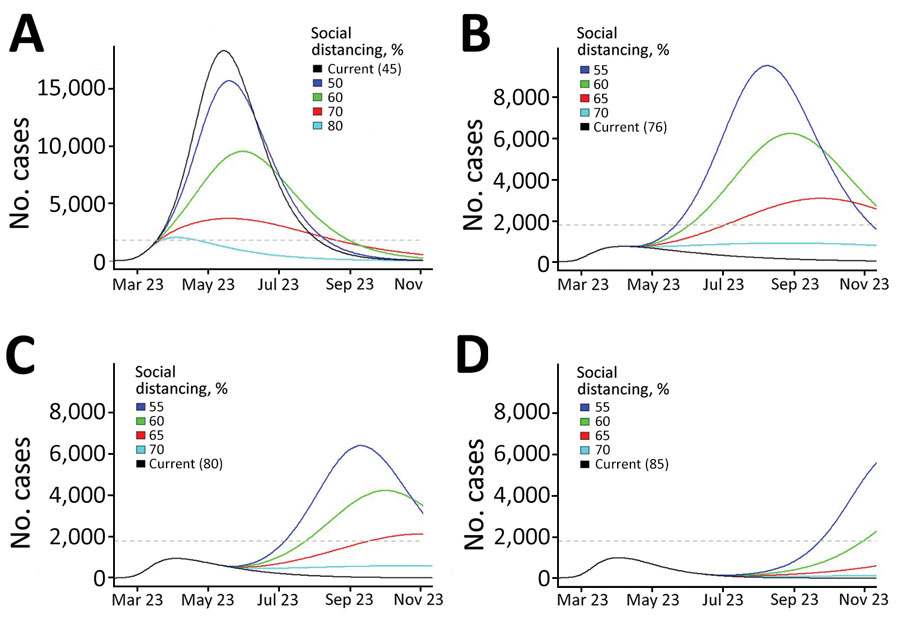Volume 27, Number 9—September 2021
Research
Estimating the Impact of Statewide Policies to Reduce Spread of Severe Acute Respiratory Syndrome Coronavirus 2 in Real Time, Colorado, USA
Figure 5

Figure 5. Projected coronavirus disease ICU needs, Colorado, USA, 2020, if current trajectory continues (black line) and for a range of social distancing scenarios (colored lines) generated by using models calibrated at 4 time points during April‒ June (fit 1: Apr 3; fit 2: April 16; fit 3: May 15; fit 4: June 16). Current trajectory was based on estimated parameters generated for each fit. Social distancing is modeled as a percent reduction in the contact rate from baseline, and changes in social distancing are introduced 2 weeks after model fitting date. All other fitted parameters are held at the estimated values for each fit. Because ICU estimates from fit 1 were substantially higher than for later fits, the y-axis is scaled to 20,000 as opposed to 10,000 for fits 2–4. Colorado estimated ICU capacity (1,800 beds) is indicated by the dashed gray horizontal line. ICU, intensive care unit. Numbers in parentheses are current values.
1Current affiliation: University of Maryland School of Medicine, Baltimore, Maryland, USA.